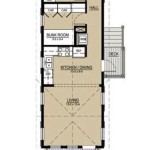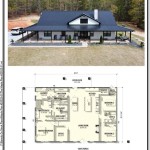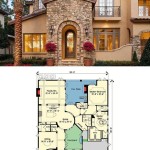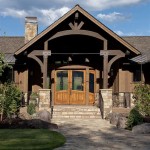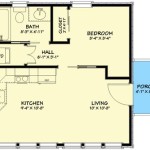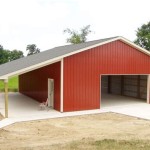Maximizing Space: A Comprehensive Guide to 400 Sq Ft Studio Floor Plans
Studio apartments, particularly those around 400 square feet, present unique challenges and opportunities for interior design and space optimization. Successfully designing a compact space requires careful planning, strategic furniture selection, and a keen understanding of how to maximize every square inch. This article will explore various strategies and considerations for creating functional and aesthetically pleasing 400 sq ft studio apartment floor plans.
The appeal of a studio apartment often lies in its affordability and convenience. However, the limited square footage demands thoughtful execution to avoid a cramped and disorganized living environment. Effective floor plan design focuses on creating distinct zones within the single room, delineating areas for sleeping, cooking, working, and relaxing. This separation, though often achieved without physical walls, helps to create a sense of order and spaciousness.
Careful assessment of individual needs and lifestyle is paramount before embarking on any design project. Determining the primary functions the space needs to accommodate will dictate the layout and dictate the type of furniture. A student might prioritize a dedicated study area, while a professional may focus on creating a comfortable and inviting living space for entertaining. Understanding these priorities will guide the selection of furniture, storage solutions, and overall design aesthetic.
Prioritizing Functionality and Flow
One of the primary objectives in designing a 400 sq ft studio is to ensure a smooth and logical flow throughout the space. Consider how you will move between different areas and ensure there are clear pathways. Obstacles and clutter can disrupt this flow, making the small space feel even smaller. The location of the entrance, windows, and existing architectural features will all influence the layout.
Strategic furniture placement plays a crucial role in defining zones and maintaining a functional flow. Avoid blocking natural light sources with bulky furniture. Instead, arrange furniture to maximize light penetration and create an open and airy feel. Open-concept layouts are generally preferred in studio apartments, avoiding the use of solid partitions that can visually shrink the space. Consider using rugs to visually define different zones within the apartment.
Vertical space should be fully utilized. Tall bookshelves, wall-mounted cabinets, and hanging storage solutions can significantly increase storage capacity without occupying valuable floor space. These solutions are particularly effective for storing books, clothing, and kitchen supplies. Utilizing the vertical dimension also draws the eye upward, making the room feel taller and more spacious.
Multi-functional furniture is essential in a small studio. Sofa beds provide a comfortable seating area during the day and transform into a bed at night, maximizing space utilization. Folding tables and chairs can be easily stored when not in use, freeing up valuable floor space. Ottomans with built-in storage provide additional seating and storage options. Investing in these adaptable pieces is crucial for maintaining a flexible and clutter-free living environment.
Strategic Furniture Selection and Arrangement
Choosing the right furniture is critical for creating a functional and stylish 400 sq ft studio. Scale is particularly important. Overly large furniture will overwhelm the space, making it feel cramped and claustrophobic. Opt for smaller, more streamlined pieces that can easily be moved around and reconfigured as needed. Light-colored furniture and finishes can also help to make the space feel brighter and more open.
Consider incorporating furniture with hidden storage compartments. Beds with drawers underneath, coffee tables with lift-up tops, and benches with storage inside can provide valuable space for storing linens, clothing, and other items. These integrated storage solutions help to minimize clutter and keep the apartment organized.
Mirror placement can significantly impact the perception of space. Strategically placed mirrors can reflect light and create the illusion of a larger room. Consider placing a large mirror on a wall opposite a window to maximize light reflection. Mirrors can also be used to visually expand narrow hallways or alcoves.
Floating shelves are a great alternative to traditional bookshelves, offering a minimalist and space-saving storage solution. They can be used to display books, plants, and decorative items without taking up valuable floor space. Varying the height and arrangement of the shelves can add visual interest to the wall.
When arranging furniture, consider the flow of traffic and the function of each zone. The sleeping area should ideally be located in a quieter and more private part of the apartment. The living area should be comfortable and inviting, with ample seating for guests. The kitchen area should be functional and efficient, with easy access to appliances and storage.
Creating Distinct Zones Without Walls
Defining different zones within a studio apartment is essential for creating a sense of order and separation. While physical walls are not an option, various strategies can be employed to visually delineate different areas. These methods can include using furniture placement, area rugs, lighting, and decorative screens to create distinct zones without sacrificing the open feel of the space.
Area rugs are a simple and effective way to define different zones. Use a large rug to anchor the living area, a smaller rug to define the dining area, and a runner rug to delineate a hallway. The different colors, patterns, and textures of the rugs can help to visually separate these zones.
Strategic lighting can also be used to create distinct zones. Use brighter lighting in the kitchen and work areas, and dimmer lighting in the living and sleeping areas. Task lighting, such as desk lamps and reading lights, can provide focused illumination in specific areas. Different types of lighting can help to create ambiance and define the function of each zone.
Bookshelves and storage units can serve as both storage and room dividers. A strategically placed bookshelf can create a visual barrier between the sleeping area and the living area, providing privacy and defining the two zones. Open shelving allows light to still flow through, maintaining the open feel of the space while providing a sense of separation.
Curtains and screens offer a flexible and versatile way to divide a studio apartment. Curtains can be used to create a temporary partition between the sleeping area and the rest of the apartment, providing privacy when needed. Decorative screens can add visual interest and create a sense of separation without completely blocking light.
Painting different areas of the studio apartment in different colors can also help to define different zones. Use lighter colors in the living and sleeping areas to create a bright and airy feel, and darker colors in the kitchen and work areas to create a more intimate and focused atmosphere. Color can be a powerful tool for defining space and creating a cohesive design.
In conclusion, designing a 400 sq ft studio apartment requires careful planning, strategic furniture selection, and a keen understanding of space optimization. By prioritizing functionality, selecting multi-functional furniture, and creating distinct zones, it is possible to transform a small studio into a comfortable, stylish, and functional living space.

400 Sq Ft Floorplan

Decorating A Studio Apartment 400 Square Feet Sq Ft Floor Plans Layout

Pin Page

Cottage Plan 400 Square Feet 1 Bedroom Bathroom 1502 00008

400 Square Foot Apartment Floor Plan

Whisper Hollow Apartments Studio 1 Bath 400 Sq Ft Available Units

Pin Page

Pin Page

Garage Apartment Plans 2 Car With Studio 035g 0021 At Www Thegarageplan Com

400 Sq Ft Apartment Floor Plan

